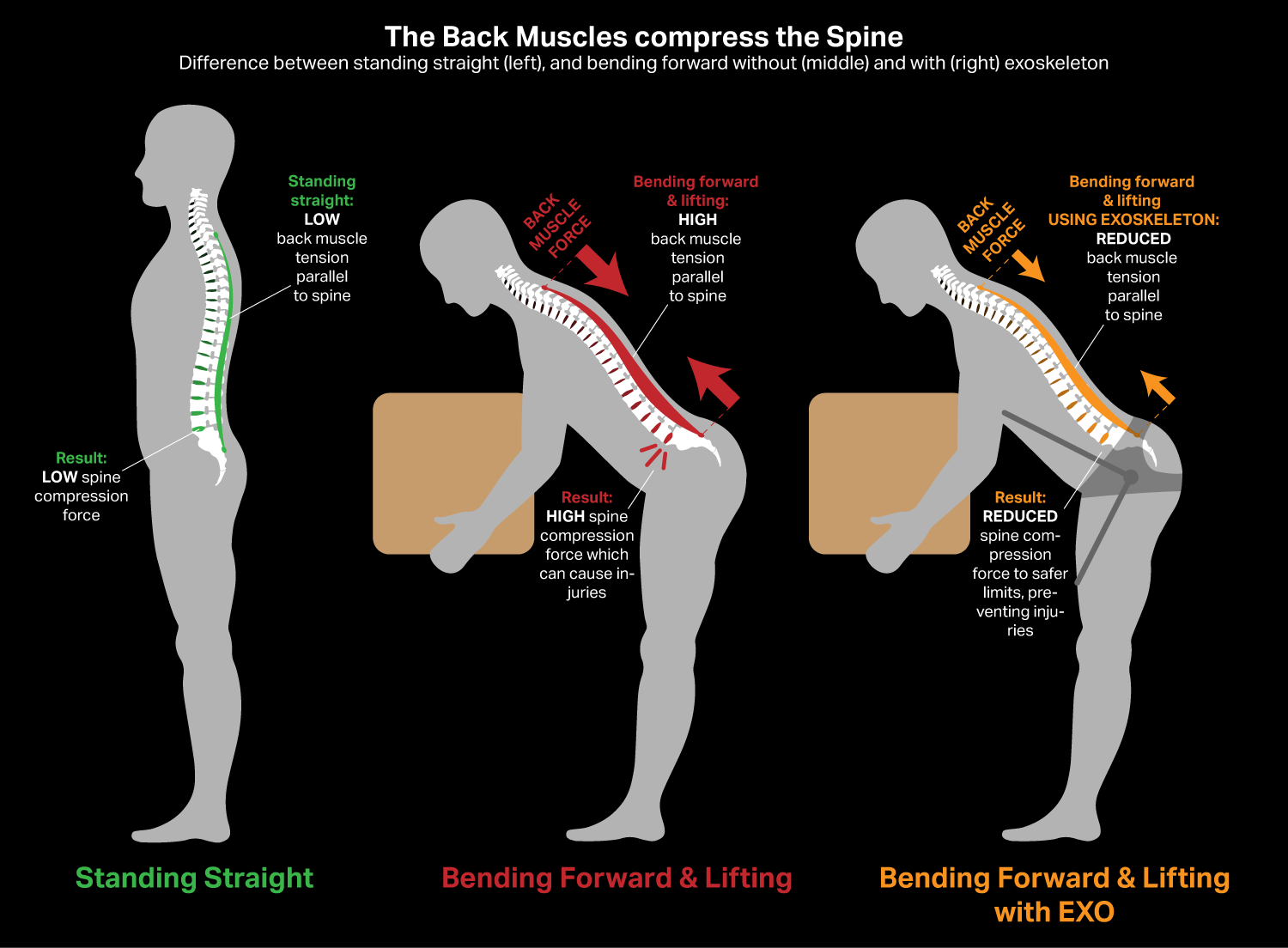1. How exoskeletons prevent MSDs
As you might remember from the first page, musculoskeletal disorders (MSDs) can be divided into (1) muscular disorders and (2) skeletal disorders. While muscular disorders can also be severe, it is skeletal disorders that make people unfit for work for an extended time or even permanently, because muscles have much faster recovery than our skeletal system. We have also learned that when doing heavy lifting, it is our own muscles that can put enough force on our spine to herniate our own intervertebral discs. The figures below illustrate how exoskeletons can help prevent both muscular and skeletal disorders.
Because standing straight without lifting (left figure) does not require much back muscle tension, the compression force on the spine is also low. Bending forward and lifting (middle figure) requires a lot of back muscle tension, and because the back muscles are parallel to the spine they exert a high compression force on the spine. The exoskeleton (right) will partly take over the work of the muscle, therefore reducing the force the back muscles exert on the spine, reducing spine compression.
You can see that for the back, muscular and skeletal disorders have a tight connection. Exoskeletons can help prevent muscular disorders by relieving the muscles. And by relieving the back muscle the spine receives less spine compression, helping to prevent skeletal disorders.
“Back-supporting exoskeletons partly take over the work of the back muscles, therefore partly relieving these muscles, and therefore also the spine.”
As can be read on the Spine Compression Basics page, there is a lot of difference between human beings in terms of how much spine compression they can handle based on their vertebrae size and density. The same holds for the back muscles, with the big difference that muscles have amazing recovering, strengthening and growing properties to increase their loading capabilities if properly trained. The spine does not have much of this capability. You will just have to work with what you got and try not to break it in the process.
It is therefore very personal whether a person needs to be careful with muscular ór skeletal disorders. A person with very untrained back muscles will have a high chance of muscular disorders if he starts to work a job with high repetitions of heavy lifting. For an increased chance of skeletal disorders, a person might just have genetically received relatively small vertebrae. Also, a person with highly trained back muscles might have a higher chance of skeletal disorders compared to an untrained person because big back muscles can also generate bigger spine compression forces. However, the trained person might also be more aware of proper lifting techniques to minimize the risk of skeletal disorders.


